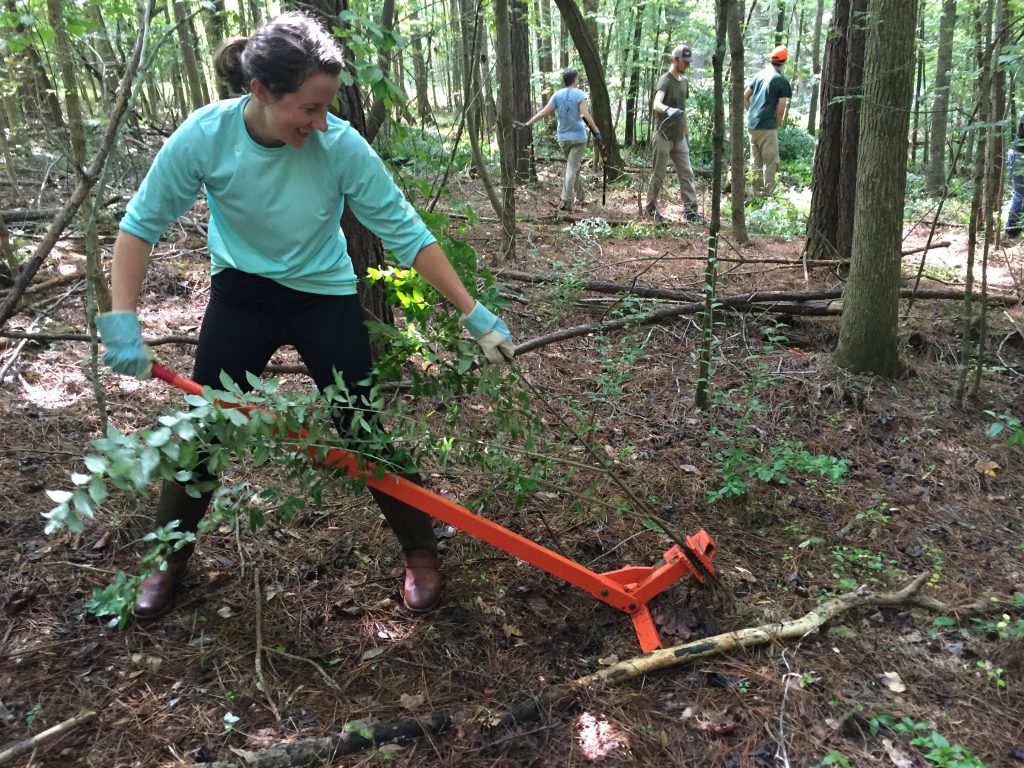By Caroline Durham
Many landowners are familiar with the growing number of unwelcome guests taking over North Carolina’s Piedmont. They’re taking over your hardwood forests, your beautiful riverbeds, and even your backyard garden. Some of these trespassers include the ever-present Japanese stiltgrass (Microstegium vimineum), the stubborn Chinese privet (Ligustrum sinense), and the rapidly colonizing Tree of Heaven (Ailanthus altissima). Nonnative, invasive species seem to be everywhere, leaving landowners feeling overwhelmed and at a loss for what to do.
Let’s not beat around the (Rosa multiflora) bush – management of nonnative species is difficult. It can feel like a never ending process that’s tough on your back and your wallet. The National Invasive Species Council will tell you that the most cost-effective way to combat invasive plants is by practicing prevention. That is, keeping nonnatives from becoming established in the first place.
Here are some steps you can take to prevent unwanted or accidental introductions of nonnatives:
- Clean equipment before transporting it between properties
- Review a list of nonnative species prior to any planting (this may be found at North Carolina Native Plant Society’s website)
- Remove invasive species from designed landscapes before they can spread
- Work with neighboring landowners to encourage preventative actions
If you, like many landowners in the Triangle, already have nonnative species creeping onto your property, the second line of defense is the early detection and rapid response (EDRR) method. When new invasive species infestations are detected, it is important to contain the population and eradicate it if possible. According to the USFS, early elimination of invasive species will result in lower cost and less damage than implementing a long-term plan after the species is established. Please consult https://projects.ncsu.edu/goingnative/ for a detailed list of plants to watch out for, as well as eradication techniques.
If your land has been disturbed or has degraded and is now home to an established population of invasive species, it might be time to implement a more comprehensive technique. After a lot of experience managing bothersome plants, TLC’s Senior Land Manager, Walt Tysinger, advises that you not only remove the nonnative population, but also restore your land by planting a tough native seed mix in its place. The National Invasive Species Council (NISC) agrees with him. Ecosystem restoration is listed as the last line of defense against invasive species in the NISC 2016-2018 Management Plan. The mass removal of invasive species in an already degraded habitat can cause a major disturbance. If the land is left untouched after that disturbance it could leave the ecosystem vulnerable and trigger the invasion cycle all over again. It is best to recognize the factors that led to the decline of your land and establish a restorative management plan with goals to combat those causes. Once your land has been restored back into a functional ecosystem, it will likely be strong enough to out-compete incoming nonnative species. After all, native plants have the home field advantage.
Your county forest ranger is a great resource for assistance with invasive species eradication and management advice.

